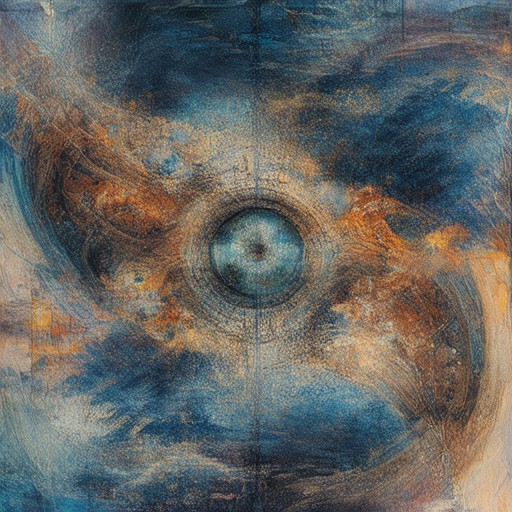Visual storytelling has become a cornerstone of modern blogging, offering readers a unique way to engage with content and connect emotionally. By integrating visuals such as images, infographics, videos, and interactive elements, bloggers can captivate audiences and convey complex ideas in a more dynamic manner. This approach not only enhances the reader’s experience but also elevates the overall quality of the blog. Whether through stunning photography, compelling infographics, or thought-provoking videos, visual storytelling transforms ordinary content into something extraordinary. As we delve into the world of visual storytelling blogs, we’ll explore how these innovative techniques can elevate your blog’s appeal, leaving readers with lasting impressions and increased engagement. From mastering the key elements of visual storytelling to discovering real-world examples, this guide will provide you with actionable strategies to take your blog to the next level.
Key Takeaways
– Enhance Engagement: Use visual elements like images, videos, and infographics to capture attention and boost reader interaction.
– Improve Retention: Visuals aid in processing complex ideas, making information more digestible and memorable.
– Increase Shareability: Create shareable content with visuals that resonate across platforms, expanding your audience reach.
– Strengthen Brand Identity: Maintain a consistent visual style aligned with your brand, fostering recognition and cohesion.
– Gain a Competitive Edge: Stand out by incorporating visuals, offering a dynamic and interactive reading experience.
– Implement Effective Strategies: Use high-quality images, infographics, videos, and interactive elements to enhance your blog’s appeal.
– Leverage Trends: Stay updated on visual storytelling trends to keep your blog innovative and engaging.
– Balance Text and Visuals: Combine text and visuals thoughtfully to enhance the narrative without overwhelming readers.

How to Effectively Use Visual Storytelling in Your Blog
Visual storytelling can transform your blog into a more engaging and immersive experience for readers. By strategically incorporating visuals, you can break up text-heavy content, enhance the narrative, and keep your audience hooked. Here’s how to do it effectively:
- Plan a Cohesive Theme or Narrative Arc
- Use a Mix of Visual Elements
- Design Consistently
- Add Accessibility Features
- Start Small and Iterate
- Optimize Loading Speed
- Integrate SEO Best Practices
- Encourage Reader Interaction
- Test and Iterate
– Begin by defining a clear theme or story arc that ties your visuals together. Whether it’s a series on “The History of Art” or “DIY Home Decor,” ensure each visual complements the overarching message.
– Incorporate a variety of visuals to cater to different learning styles. Use high-quality images, infographics, charts, and videos to illustrate key points.
– Maintain a consistent style and color scheme across your visuals to reinforce your brand identity. Use design tools like Canva or Adobe Spark to create professional-looking visuals without needing advanced design skills.
– Don’t forget accessibility! Include alt texts for images, captions for videos, and ensure infographics are readable. This improves usability for all readers, including those with visual impairments.
– Begin by adding one or two visuals per section and adjust based on reader feedback. Observe how the content performs and tweak the number of visuals as needed to strike the right balance.
– To avoid frustrating your readers, optimize visual files. Compress images, use web-safe formats (JPEG for photos, PNG for graphics), and leverage browser caching tools.
– Enhance your blog’s SEO by using descriptive file names and alt texts for images. Consider creating visuals that align with featured snippet opportunities to attract more organic traffic.
– Make your visuals interactive! Add hover effects, clickable infographics, or gallery slideshows to encourage readers to engage more deeply with your content.
– Continuously test different visual placements and types. Use analytics tools to track engagement and performance, then refine your approach based on the data.
By implementing these strategies, you can elevate your blog’s visual storytelling, captivate your audience, and enhance their overall reading experience. Remember to stay adaptable and always seek ways to improve based on feedback and trends in digital media.
What Are the Best Ways to Incorporate Visual Storytelling Into Your Blog?
Incorporating visual storytelling into your blog can significantly enhance reader engagement and retention. Here are some effective strategies to get started:
- Use High-Quality Images and Visuals: Complement your text with stunning visuals like photos, illustrations, or graphs. These elements make your content more relatable and easier to digest.
- Infographics and Charts: Present complex information in a simple, visually appealing format. Infographics are particularly effective for conveying data in an easy-to-understand manner.
- Video Content: Embed videos that demonstrate your subject matter or showcase your artistic process. Videos are highly engaging and can boost your blog’s visibility on platforms like YouTube.
- Interactive Elements: Incorporate quizzes, polls, or clickable images to encourage reader interaction. This adds a dynamic element to your storytelling experience.
- Storytelling Through Colors and Textures: Use color palettes and textures that align with your brand identity to create a cohesive visual narrative. This helps in establishing a unique aesthetic appeal.
- Consistent Layout and Design: Maintain a consistent layout and design across your blog. This makes your content easily recognizable and enhances the overall reading experience.
To execute these strategies effectively, consider leveraging tools like Artful Journey’s resource library for creative inspiration and guidance. By integrating these visual elements thoughtfully, you can transform your blog into a captivating hub for visual storytelling.

Best Practices for Integrating Visual Storytelling into Your Blog
Visual storytelling enhances reader engagement by combining text with images, videos, and infographics. Here’s how to effectively implement it:
- Define Your Vision
- Decide on the purpose and audience of your visual storytelling.
- Plan the key messages and themes you wish to convey.
- Choose the Right Tools
- Use platforms like Canva for creating infographics and banners.
- Explore free video editing tools like iMovie or DaVinci Resolve.
- Stock photo websites like Unsplash or Pexels for high-quality images.
- Plan Your Layout
- Break up text with visuals to maintain reader interest.
- Place images at key points in your article, avoiding overwhelming the reader.
- Optimize for SEO
- Add descriptive file names and alt texts for images.
- Use keywords naturally within your visuals for better search engine visibility.
- Encourage Interaction
- Ask questions or prompt readers to comment on your visuals.
- Incorporate polls or quizzes using visual elements.
- Stay Consistent and Track Performance
- Establish a consistent style and placement for visuals.
- Use analytics to monitor engagement and adjust your strategy accordingly.
- Keep Updated and Inspired
- Follow successful blogs and join online communities for inspiration.
- Experiment with new tools and techniques to stay ahead of trends.

What Are the Benefits of Incorporating Visual Storytelling Into a Blog?
Visual storytelling enhances engagement by appealing to multiple senses and creating a more immersive experience for readers.
- Improved Reader Engagement: Visual elements like images, videos, and infographics capture attention and encourage longer interaction with the content.
- Better Information Retention: Visuals help readers process complex ideas more effectively, leading to improved understanding and recall.
- Increased Shareability: Visual content is often more shareable on platforms like social media, expanding your audience reach.
- Enhanced Brand Consistency: Visual storytelling aligns with your brand identity, creating a cohesive and recognizable presence.
- Competitive Edge: Using visuals sets your blog apart from text-only competitors, offering a fresh and dynamic reading experience.
By integrating visual storytelling, you can transform your blog into a more interactive and impactful platform that resonates with your audience on a deeper level.
Top Strategies for Incorporating Visual Storytelling Into a Blog
Visual storytelling is a powerful technique that can significantly enhance the engagement and appeal of your blog posts. Here are some proven strategies to effectively incorporate visual storytelling:
- Use High-Quality Images : Select visually appealing and relevant images that complement your content. Make sure they are high resolution and properly optimized for web use.
- Infographics and Charts : Break down complex information into easy-to-understand visuals like infographics or charts. This helps readers grasp the content quickly and retain information more effectively.
- Integrate Videos : Incorporate short, engaging videos that demonstrate processes, tutorials, or share personal stories. Videos can make complex ideas more relatable and entertaining.
- Consistent Visual Style : Maintain a consistent color scheme, typography, and layout across your blog. This creates a professional and cohesive look, making it easier for readers to navigate and engage with your content.
- Engage Readers with Interactive Elements : Add interactive elements such as clickable images, quizzes, or polls to encourage deeper engagement with your content.
- Leverage User-Generated Content : Encourage readers to submit their own stories, artwork, or photos related to your topic. This adds authenticity and provides fresh content for your blog.
- Optimize for Mobile : Ensure that all visual elements are mobile-friendly, as many readers access blogs via smartphones and tablets.
- Stay Updated on Trends : Keep an eye on visual storytelling trends by following popular blogs, attending webinars, and exploring resources like Smashing Magazine or Medium .
- Balance Text and Visuals : Avoid overwhelming your readers with too many visuals. Ensure that text and visuals work together to enhance the overall narrative without distracting from the message.

What Are the Key Elements of Visual Storytelling in a Blog?
Visual storytelling in blogging goes beyond mere images—it’s about crafting a cohesive and engaging narrative through visuals that resonate with readers.
- Images: High-quality photographs, illustrations, or graphics that visually represent the content. Use images that complement the text and enhance the story.
- Visuals: Include charts, diagrams, or infographics to present complex ideas in an accessible way. Visuals help break up text and make information more digestible.
- Infographics: Condense information into easy-to-understand visual representations. Infographics are particularly effective for conveying data and statistics.
- Videos: Incorporate short video clips or animations to demonstrate processes, explain concepts, or share personal stories. Videos capture attention and can supplement written content.
- Engaging Narratives: Pair visuals with compelling text to create a unified story. Use descriptive language and emotional appeals to draw readers deeper into the content.
- Typography: Choose fonts and colors that align with the overall theme or mood of the blog. Consistent typography enhances readability and adds to the visual appeal.
- Color Schemes: Use color strategically to evoke emotions or guide attention. A well-chosen color palette can significantly impact how readers perceive the content.
- Layout Design: Optimize the blog’s design for readability and visual interest. Use grids, columns, and spacing effectively to ensure the content is both attractive and easy to navigate.
By integrating these elements thoughtfully, bloggers can create immersive experiences that captivate audiences and keep them engaged. Remember to always tie visuals back to the overarching theme or message of the blog post.
For more tips on enhancing your blog’s visual storytelling, explore Artful Journey and discover resources that can help you elevate your creative writing and visual presentation.




0 Comments